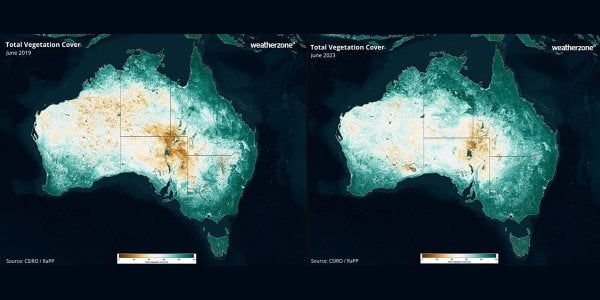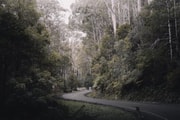Abnormal rainfall in recent years seen to douse bushfire risk, experts say
Ah, Australian summers–long, hot days spent outdoors with friends and family. But one of the critical realities of the season is that, with high temperatures and dry conditions, it's prime bushfire season.
Unfortunately, that reality holds this year too.
Weatherzone meteorologist Ashleigh Lange recently said that according to most forecast models, we're moving closer to an El Niño and a positive Indian Ocean Dipole (IOD) combo, which could bring abnormally warm and dry weather to our country.
‘If these climate drivers develop, they will promote abnormally warm and dry weather in Australia, which is likely to increase the risk of fires,’ Lange explains.
However, this year could be different.
Historically, Australia's worst bushfire seasons have coincided with years of severe drought, and that's why it's fortunate that over the past three years, we've been experiencing La Niña, resulting in above-average rainfall across the country. Some areas in New South Wales recording their highest ever levels according to the Bureau of Meteorology, for example.
What's more, the abundance of rain has been accompanied by some stunning changes in Australia's landscape; as you can see in the maps below, the continent has significantly more green vegetation than it did in 2019 during the Black Summer bushfire season.
But why is this good news?
Well, the increased store of green vegetation and higher soil moisture across the country should help to offset the influence of the warm and dry weather we usually expect this time of year, according to Lange.
‘While some parts of Australia may see an active fire season this spring and summer, it is unlikely to match the severity of the 2019-20 Black Summer,’ she adds.

However, while the effects of the past years’ rainfall is undoubtedly encouraging, it's essential we do our bit in minimising our risk of bushfires too. That's why we've compiled a few need-to-knows to help you and your community stay safe this summer–from being aware of fire dangers in your area to knowing where to turn in an emergency:
What do you think about this story, dear members? Do you have additional bushfire prevention tips? Share them in the comments!
Unfortunately, that reality holds this year too.
Weatherzone meteorologist Ashleigh Lange recently said that according to most forecast models, we're moving closer to an El Niño and a positive Indian Ocean Dipole (IOD) combo, which could bring abnormally warm and dry weather to our country.
‘If these climate drivers develop, they will promote abnormally warm and dry weather in Australia, which is likely to increase the risk of fires,’ Lange explains.
However, this year could be different.
Historically, Australia's worst bushfire seasons have coincided with years of severe drought, and that's why it's fortunate that over the past three years, we've been experiencing La Niña, resulting in above-average rainfall across the country. Some areas in New South Wales recording their highest ever levels according to the Bureau of Meteorology, for example.
What's more, the abundance of rain has been accompanied by some stunning changes in Australia's landscape; as you can see in the maps below, the continent has significantly more green vegetation than it did in 2019 during the Black Summer bushfire season.
But why is this good news?
Well, the increased store of green vegetation and higher soil moisture across the country should help to offset the influence of the warm and dry weather we usually expect this time of year, according to Lange.
‘While some parts of Australia may see an active fire season this spring and summer, it is unlikely to match the severity of the 2019-20 Black Summer,’ she adds.
Key Takeaways
- Forecast models predict El Niño and a positive IOD for the second half of 2023, increasing the risk of fires.
- Australia has just experienced three consecutive La Niña events between 2020 and 2023, bringing above-average rainfall to most of the country.
- This increased rainfall has resulted in more green vegetation and higher soil moisture, beneficial conditions that may ease the severity of the upcoming fire season.
- According to Weatherzone meteorologist Ashleigh Lange, while parts of Australia may see an active fire season, it's unlikely to match the severity of the 2019-2020 Black Summer fire season.
However, while the effects of the past years’ rainfall is undoubtedly encouraging, it's essential we do our bit in minimising our risk of bushfires too. That's why we've compiled a few need-to-knows to help you and your community stay safe this summer–from being aware of fire dangers in your area to knowing where to turn in an emergency:
- Abide by your local fire warning alerts
- Arrange a specific place to meet in the event of a bushfire
- Practice an evacuation plan with your family or friends before an emergency occurs
- Ensure you know how your local fire service works to know who to call in an emergency
What do you think about this story, dear members? Do you have additional bushfire prevention tips? Share them in the comments!









